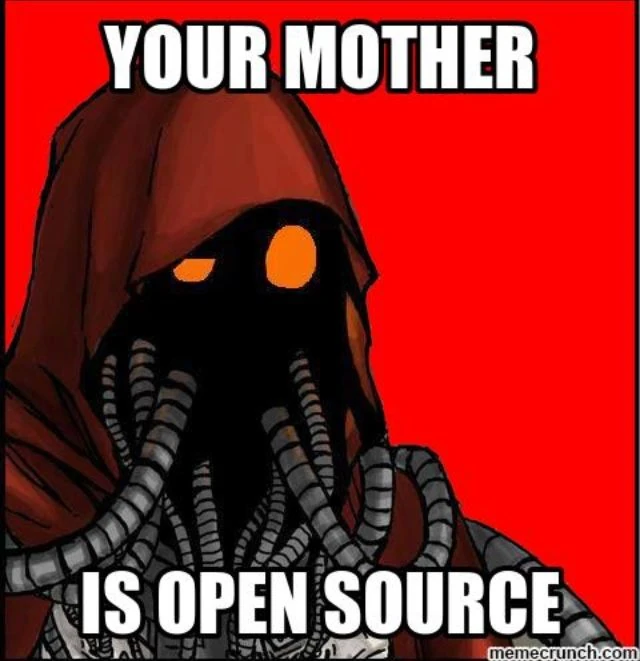While I don’t enjoy the fact that this introduces a ton of maintenance issues on systemd-less systems that would like to continue supporting GNOME, I do think leveraging systemd to elegantly revive the session save/restore functionality bodes a lot of optimism for the set of features that will follow.
I’m at least thankful that this maintainer/contributor dedicated about half of their announcement on how systemd-less systems could alleviate this issue.
Good news: session save/restore
Bad news: lennart’s tumor
Verdict: nope.
Well this is bound to be controversial, to say the least. GNOME and systemd are two pieces of software that attract very polarized opinions.
I’m interested to see how this evolves. The planned session restore feature sounds nice. With the Wayland changes coming too, GNOME 50 should be a big deal, one way or another.
Ubuntu + Snap + GNOME + Wayland + Systemd
Holy moly, there is a lot of stuff for haters to talk about. Each of these parts are very polarizing on its own, but combined, phew.
You forgot rust 🦀
Oh my, you are right, sudo-rs!!
Are there rust haters? I guess there must be, but I don’t think I’ve run across that so much as the “everything ever made must be rewritten in rust” crowd, and then everyone else who doesn’t much care what language is used as long as it works.
It’s probably the MIT licensed rust reimplementation of coreutils and sudo-rs
Yes, systemd is a very good and very well written piece of software while GNOME is a pile questionable decisions that uses web tech to create themes and takes about half a second to load up any window. Also the same pile where you’ve to use 3 different network management UIs to get stuff done. And… where you can’t have desktop icons because they were too hard to get done properly OR where you can’t have a “disable animations” toggle on the settings to actually disable ALL animations instead of just some stuff while leaving others arounds.
Please consider to stop hating on GNOME or its design choices the very moment it’s brought up.
Sure, can they consider stopping wasting money / time actually develop useful stuff? For a DE that got €1M from the Sovereign Tech Fund they’re not showing results.
Okay fine, desktop icons can be a design decision, however a “disable animations” toggle on the settings that doesn’t disable ALL animations… that’s just poorly made software, not something you may have an opinion on.
Sure, can they consider stopping wasting money / time actually develop useful stuff? For a DE that got €1M from the Sovereign Tech Fund they’re not showing results.
It is a fact that GNOME is the only other DE (besides KDE Plasma) that has modern features. So, frankly, I don’t know what you’re talking about.
Furthermore, GNOME’s ways lends itself a lot better to the secure by default/design paradigm(s) as illustrated by this table from secureblue.
however a “disable animations” toggle on the settings that doesn’t disable ALL animations…
Do you mean the one that used to be in accessibility? Though, FWIW, I couldn’t even find it this time 😅. Instead, consider to evoke the following command:
gsettings set org.gnome.desktop.interface enable-animations falseI’ll grant you that it might feel archaic for some to do this through a terminal. Though, this setting is also accessible through Dconf Editor. Regardless, at least it works as desired.
Even that command wont really disable ALL animations.
Would you mind pointing out which animations are allegedly not disabled?
GNOME - misses basic functionality every other DE provides, still uses the most resources even before you add extensions
Functionality like what?
like the desktop icons, the minimize button, the ability to adjust fonts, change themes, right click menu icons, systray…
Yeah that stuff I myself got rid of back in the Gnome 1 days when you could still customize all that. I appreciate that the Gnome devs came to the same conclusions as me.
- Desktop icons are usually hidden behind windows. It makes more sense to put launch icons in front of everything else, like Gnome does when you hit the Win/Super key.
- Minimize is unnecessary when you have workspaces and efficient window switching methods. Same for the task bar.
- A long time ago, when I was young, I played around with themes and shit, when that was still supported. There were always problems. Theming any complex set of applications yourself is basically impossible without causing issues, and themes made by others also exhibited this problem. You need a concerted long-term effort, plus buy-in from basically all app development teams, to make a comprehensive theme. Note how Microsoft/Apple don’t want to support theming either.
- Systray was always some excuse for apps to just keep running in the background while not taking up taskbar space. Steam can go fuck itself, just please exit when I ask you to, and don’t treat the close button as “minimize”. If I wanted Steam running in the background I would just put it on another workspace.
- I’m not sure what you mean. Lack of desktop icons is only valuable to people who want that (I don’t, and I remove them on my Plasma systems).
- Gnome has a minimize button, and you need only turn it on in Tweaks > Windows.
- You can change themes in Tweaks > Appearance, and you can install themes by script or by manually dropping the files where they need to go (something you sometimes have to do on Plasma, too).
- You can further adjust themes with extensions or scripts. Unless you change themes often, quick theme swapping is not a feature everyone needs or wants. How often are people doing this IRL?
- I can right click all my menu and dash/dock icons and get an app-specific context menu, so I’m not sure what you mean with this gripe.
- Systray is one of the things I don’t like about Plasma, and I wish they’d find a different solution. It’s bad enough on Windows.
I run both DEs on different systems, and they’re both good and bad at different things, but they both have comparable feature sets. Their workflows are different, yet you can do virtually all the same things in each.
Minimizing is a tweak??
I’ll stick to xfce.No, the minimize button is, but enjoy Xfce
right click menu icons
I think they might be referring to icons next to menu items in the right click menu.
I think those icons can be handy sometimes, but I find them to be massively overused in KDE especially, to the point that it feels visually overwhelming sometimes. Having zero icons at all in GNOME might be the other extreme, but I appreciate how clean it looks.
Blender using icons strategically to visually group related items is probably the best of both worlds.
Oh, that makes more sense. I appreciate the clarity!
Finally, because nobody needs to manage system like it’s the 2000’s nor have duplicate daemons around to do stuff that systemd does in 1/4 of the resources and with less bugs.
There are only 2 types of people. Who hate systemd and those who don’t know what systemd is. \s
Maybe it’s not so great how monolithic systemd is, but it has brought a lot of great functionality to the Linux world. Not as if Linux has ever been married to the Unix philosophy anyways.
i know what systemd is, don’t really get the hate.
I think for those people it boils down to systemd being an init system that does more than an init system maybe should. Combine that with it being more complicated to work with and with Redhat not really being that open to feedback.
The funny thing is that the init part is working really really well. At least from a user perspective. Writing a unit file is soooo much easier than writing an init script. You just point it at the executable of your service and are done. Systemd does the complicated rest.
for my mundane tasks, i don’t notice much complication. what makes it more complicated to work with?
Mundane tasks weren’t really the focus. This was a debate between Redhat and the Linux old guard where the points were all based on the extremes. They follow different ideas on how tools should work, though. Init systems focus on doing one or few things but doing them very well (the traditional UNIX approach). Systemd is a suite of many moving parts to accomplish a whole range of tasks (more modern). Init is mostly just bootstrap and services, but systemd is that plus networking, plus user sessions, plus logging, etc etc. More moving parts means increased complexity and more chance for failure. Systemd as a suite then becomes a potential single point failure where init based systems would not be. Scripting for either can be involved, but generally speaking init is/was easier to write things for.
I think most users today focus on Redhat’s control and not putting too much faith in one setup for diversity’s sake rather than the other points, but the original debate really was a philosophically based one. There isn’t a right or wrong on these, but some really interesting history.
It is another word for patriarchy, right?









